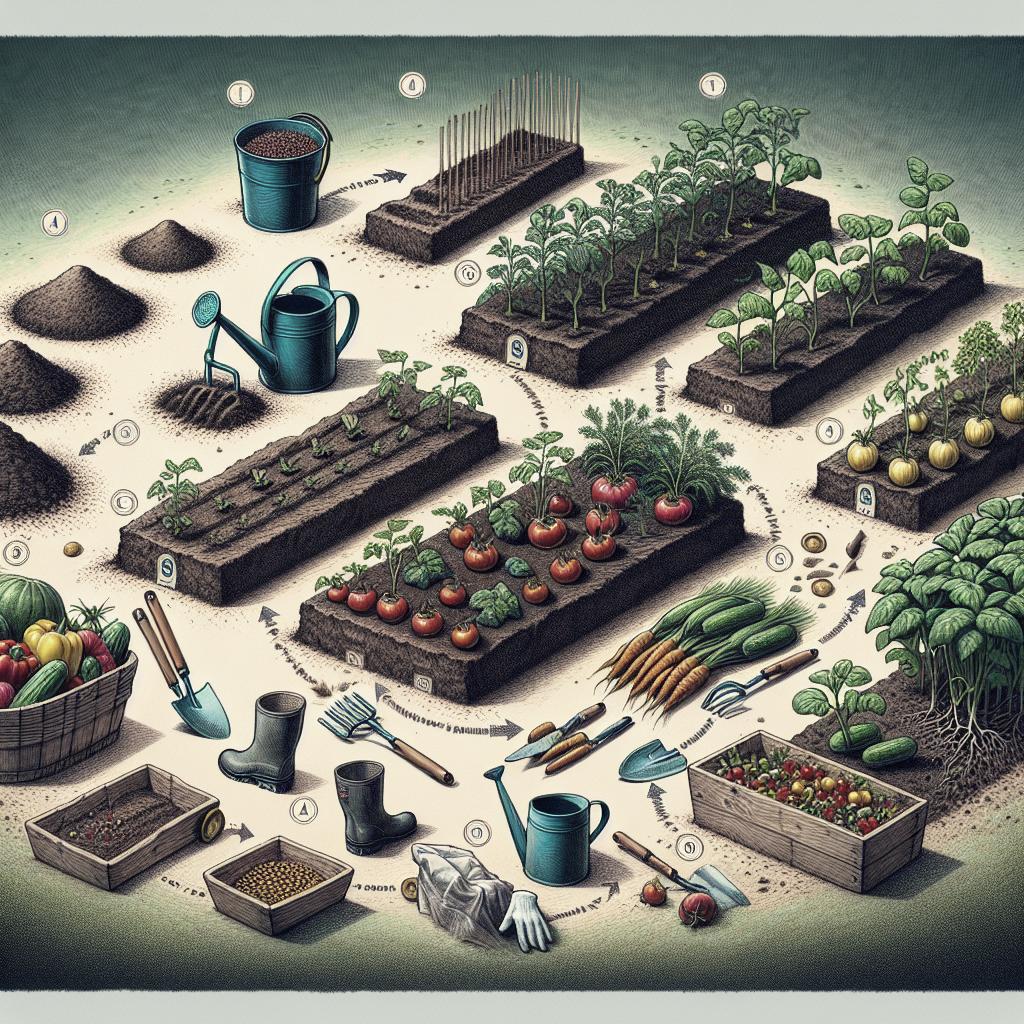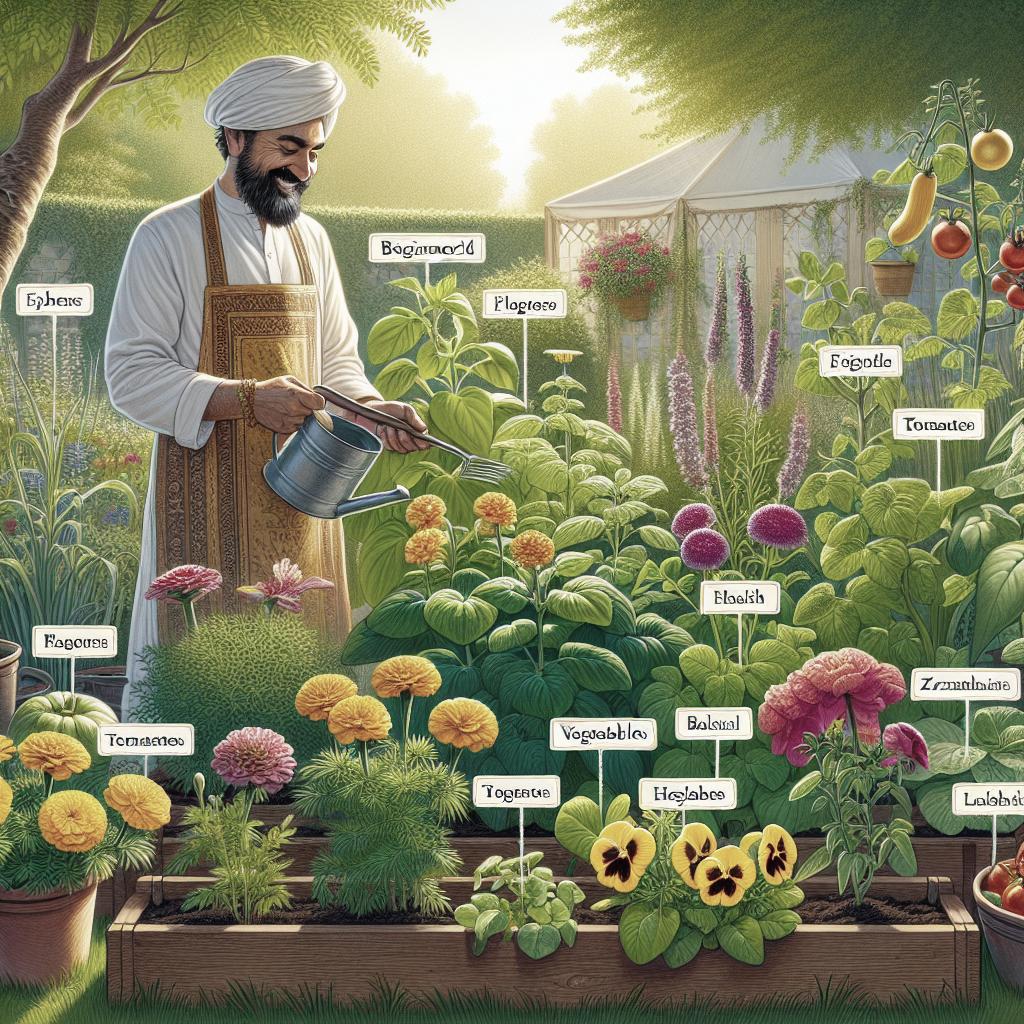“`html
How to Transplant Seedlings Properly
Transplanting seedlings is a crucial step in the gardening process that requires careful consideration and execution. This comprehensive guide will walk you through the necessary steps and tips for successful seedling transplantation. We’ll discuss when to plant seedlings, how to prepare the growing bed, and what size seedlings should be for transplant. Additionally, you’ll learn how to handle seedlings pre-transplant, effective transplanting techniques, and troubleshooting methods for failing transplants. We’ll also provide insightful tips to ensure your seedlings thrive in their new environment. Learn from our practical advice and grow a flourishing garden!
Deciding When to Plant Seedlings
Weather Forecast
The timing of seedling transplantation is intimately linked to the weather. It is imperative to choose a date when the risk of frost has passed, and temperatures are consistently warm enough to support growth. Utilize local weather forecasts and historical weather data to determine the safest window for transplanting. Unpredictable weather can be mitigated by using protective measures like row covers or cold frames.
Soil Temperature
Soil temperature plays a pivotal role in successful transplantation. Most seeds require soil temperatures between 60°F and 70°F to thrive, with variations depending on the specific plant species. A soil thermometer can provide accurate measurements, ensuring conditions are conducive for growth. If your soil is not warm enough, consider using black plastic or row covers to elevate the soil temperature.
Volunteers Germinating in the Field
Observing natural seedlings, or ‘volunteers,’ in your field can also offer clues about optimal transplanting times. These volunteers are a sign that conditions are naturally favorable for growth. By syncing your planting schedule with these natural indicators, you’re more likely to achieve successful transplantation results.
Preparing the Growing Bed for Seedlings
The preparation of the growing bed sets the foundation for healthy seedlings. Start by clearing the area of weeds, rocks, and debris, which can hinder plant growth and compete for nutrients. Loosen the soil to a depth of at least 12 inches, incorporating organic matter such as compost to improve soil fertility and structure.
Testing the soil’s pH and nutrient levels can provide insights into soil requirements. Most plants prefer neutral to slightly acidic soil, so adjusting pH with lime or sulfur as needed is beneficial. Additionally, amend the bed with a balanced fertilizer to ensure seedlings have ample nutrients when transplanting.
Seedling Size for Transplant
Balancing Robust Root System and Root-bound
Transplant seedlings when they’ve developed a robust root system, typically when seedlings have two to four true leaves. Be diligent in preventing seedlings from becoming root-bound, which occurs when roots encircle the pot and become restricted. A healthy root system will ensure the plant establishes quickly in its new location.
Weed and Pest Pressure
Consideration of weed and pest pressure is essential before transplanting. Young seedlings are particularly vulnerable; thus, a preemptive strike by managing weeds and pests beforehand is beneficial. Employing practices such as mulching and utilizing organic pesticides can protect against these threats.
Soil Type and Watering Infrastructure
Understanding your soil type and having an appropriate watering infrastructure is crucial. Well-draining soils like sandy loam are optimal; however, if working with clay-heavy soils, consider raised beds or added compost to enhance drainage. Similarly, ensure your watering infrastructure, such as drip irrigation, is in place to deliver consistent moisture to transplanted seedlings.
Handling Seedlings Pre-Transplant
Hardening Off Seedlings
Begin the hardening-off process a week before transplanting. Gradually introduce seedlings to outdoor conditions to acclimate them to sun, wind, and varying temperatures. Start with a couple of hours in a sheltered location and increase exposure daily. This step reduces transplant shock and promotes resilience.
How to Transplant
The Importance of Planting Straight
Planting seedlings straight and level is crucial for optimal growth. Ensure the root ball is entirely covered with soil, with the plant upright and stable. Adjust planting depth to keep the root collar at ground level to prevent disease prevalence and encourage robust growth.
T-Stick and String Line
Employing tools like a T-stick and a string line can aid in achieving consistent planting distances. The T-stick helps dig uniform holes, while the string line ensures seedlings are aligned in straight rows. Such precision eases future maintenance and ensures even crop development.
Using Drip Tape Emitters
Drip tape emitters are an excellent method for watering transplants efficiently. Place emitters near each plant base to provide targeted hydration directly to the root zone. This method conserves water and ensures seedlings receive adequate moisture during their establishment phase.
Using Landscape Fabric
Landscape fabric can offer multiple benefits during transplantation. It suppresses weed growth, retains soil moisture, and stabilizes soil temperatures. When laying fabric, cut X-shaped openings at appropriate intervals, allowing seedlings to be planted directly through the fabric.
Troubleshooting Failing Transplants
What to do When Seeing Problematic Signs
Failing transplants may exhibit wilting, yellowing leaves, or stunted growth. First, assess soil moisture; over or underwatering can stress seedlings. Address these issues by adjusting irrigation practices. Conduct a soil test to identify possible nutrient deficiencies or pH imbalances.
Check for signs of pest or disease pressure and employ appropriate measures like organic treatments or beneficial insects. In some cases, adjusting planting depth or protecting plants from excessive sun exposure with shade cloth may be needed to facilitate recovery.
Videos Mentioned in this Post You May Have Missed!
Incorporate educational videos on seedling transplantation to visually supplement the topics covered. Videos demonstrating techniques for preparing soil, using tools, and handling pests can be valuable resources. Explore online platforms like YouTube or gardening websites for video tutorials tailored to your plant varieties.
Lessons Learned
| Aspect | Key Points |
|---|---|
| Deciding When to Plant | Consider weather, soil temperature, and volunteer seedlings for timing. |
| Preparing the Growing Bed | Clear debris, test soil pH, and enrich with organic matter. |
| Seedling Size for Transplant | Ensure a robust root system and consider environmental pressures. |
| Pre-Transplant Handling | Harden off seedlings to acclimate to outdoor conditions. |
| Transplanting Techniques | Use tools and methods for precise planting and efficient watering. |
| Troubleshooting | Monitor signs of stress and address moisture, nutrient, or pest issues. |
“`


